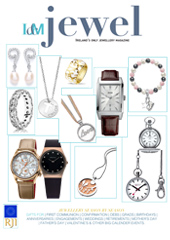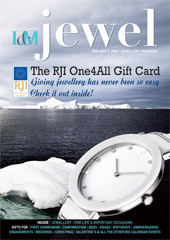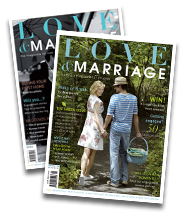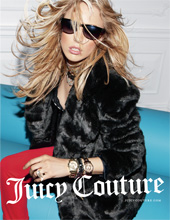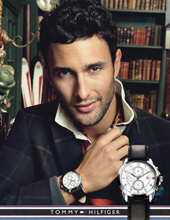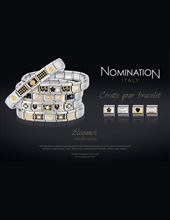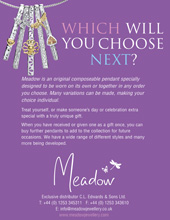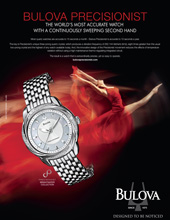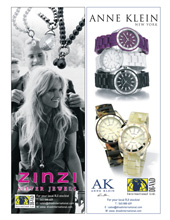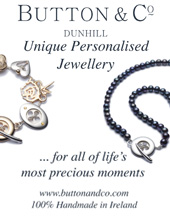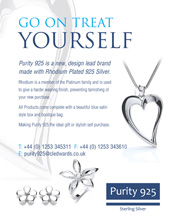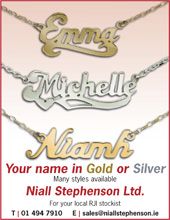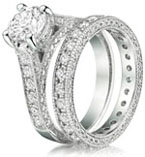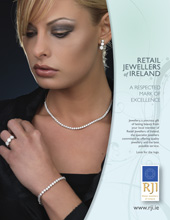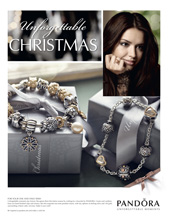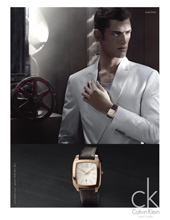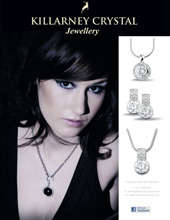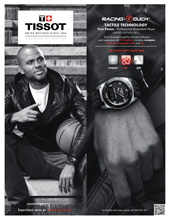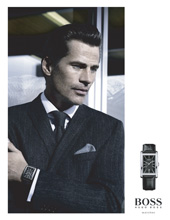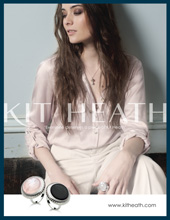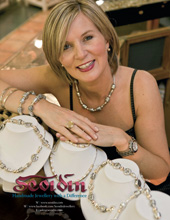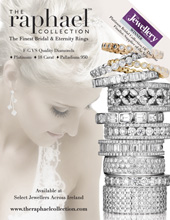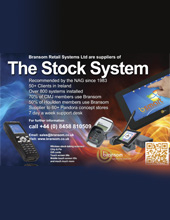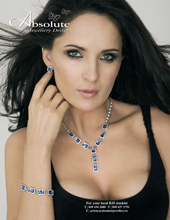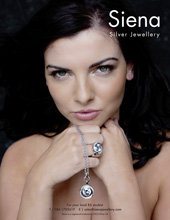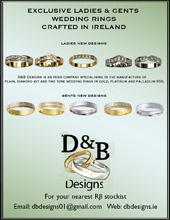Buying a Ring
Tags: Feature

Sarah Shinton takes a look at why diamonds are a girl’s best friend, especially when choosing an engagement ring.
Jump to: [Cut] [Colour] [Clarity] [Carat] [Cost] [Metals]
- Diamonds are 99.95% pure crystallised carbon and can be from 1-3 billion years old!
- They are the hardest naturally occurring substance known to man and are formed beneath the earth’s surface when crystals of diamond occur in volcano feed pipes. When volcanoes erode, they release diamonds from their feed pipes into layers of gravel that are later mined.
- Due to the rarity of this natural process, diamond mines are found in only a handful of sites around the world.
- The word diamond is derived from the Greek word ‘Adamas’ meaning unconquerable and indestructible.
- The word carat is taken from carob seeds that people used in ancient times to balance scales. This was standardised in 1907 when one carat became 0.2grams. Furthermore, one carat is divided into 100 points. Therefore, 25 points is ¼Carat, 50 points ½Carat etc.
- The most valuable diamonds are colourless, they allow the most light to pass through the stone and create the most brilliance. Very few diamonds are colourless, so most diamonds will have some yellow in them, the less yellow the better. The colour scale goes from D – Z with D being the whitest and Z being the most yellow.
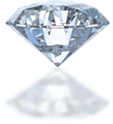
Jump to: [Cut] [Colour] [Clarity] [Carat] [Cost] [Metals]
The cut of your diamond will determine how it looks on you finger, its brilliance and how, (or what with,) it can be set. Here’s our user-friendly guide to what the various cuts are called and what they look like…
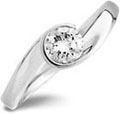
ROUND | By far the most popular diamond shape available today. It has set the standard for all diamond shapes and is admired for its sparkle.

PRINCESS | Its beautiful brilliance and unique square or rectangular cut with numerous sparkling facets makes it a favourite for engagement rings.
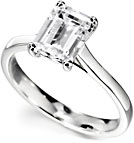
EMERALD | A rectangular shape with cut corners. An emerald cut stone will usually be of superior clarity and colour.
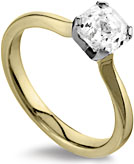
ASSCHER | Created in the early 20th by the Dutch Asscher Bros. this cut is almost identical to the emerald cut except it's square and features a flat table top surface.
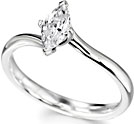
MARQUISE | An elongated shape with pointed ends that can maximise carat weight, giving you a much larger looking diamond.

OVAL | An even symmetrical design popular for small hands, giving a flattering illusion of length to the hand.

RADIANT | Trimmed corners are the trademark of this diamond, making it a popular and versatile choice. This cut requires more weight to be directed toward the diamond's depth in order to maximise brilliance.
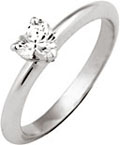
HEART | The ultimate symbol of love.
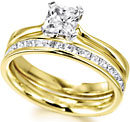
CUSHION | Also known as pillow cut, cushion cut diamonds have rounded corners and larger facets to increase their brilliance.

PEAR | Also known as teardrop for its single point and rounded edge. The length of the diamond creates a subtle slimming effect on the fingers.

TRILLION | Dramatic and bold, the trillion cut (basically a variation of the radiant cut) was developed in the 1970s
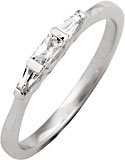
BAGUETTE | A relatively small rectangular-shaped elongated diamond. It has square corners with rows of step-cut facets parallel to the table, which can be unforgiving to the appearance of any imperfections.
Jump to: [Cut] [Colour] [Clarity] [Carat] [Cost] [Metals]
Colour: This is an extremely important element in assessing diamonds - the clearer the stone, the more rare and valuable it is. For commercial purposes, diamonds are graded from D to Z as follows:
D-F:colourless
G-J:near colourless
K-M:faint yellow
N-R:very light yellow
S-Z: light yellow
 In the pink Coloured diamonds, pink in particular, are becoming increasingly popular mainly due to high profile purchases – such as David Beckham splashing out on behalf of wife Victoria. Only a few coloured diamonds are found each year making them highly sought after among the world’s finest jewellers. A pink diamond is graded according to the intensity of colour in each individual stone. A 28.03 carat pink diamond recently debuted at Sotheby’s Auction, valued for at least $7,000,000.
In the pink Coloured diamonds, pink in particular, are becoming increasingly popular mainly due to high profile purchases – such as David Beckham splashing out on behalf of wife Victoria. Only a few coloured diamonds are found each year making them highly sought after among the world’s finest jewellers. A pink diamond is graded according to the intensity of colour in each individual stone. A 28.03 carat pink diamond recently debuted at Sotheby’s Auction, valued for at least $7,000,000.
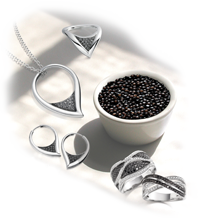 Something a little different Black diamonds have been around for a long time but it’s only in the last few years that the marketing and promoting of them has been upped, making them a fashion statement. Black would be considered as the least attractive colour for diamonds for obvious reasons. However, some couples will go to great lengths to stand out from the crowd.
Something a little different Black diamonds have been around for a long time but it’s only in the last few years that the marketing and promoting of them has been upped, making them a fashion statement. Black would be considered as the least attractive colour for diamonds for obvious reasons. However, some couples will go to great lengths to stand out from the crowd.
Jump to: [Cut] [Colour] [Clarity] [Carat] [Cost] [Metals]
Clarity: Look closely at a diamond and you will see little ‘birthmarks’ inside.
These marks are known as inclusions and they affect the value of the diamond. Obviously a flawless diamond is the very purest stone and is rare. Most diamonds will contain some inclusions, but the fewer there are, the more beautiful the stone.
Jump to: [Cut] [Colour] [Clarity] [Carat] [Cost] [Metals]
>

Carat: The carat represents the unit of weight of the diamond and a general rule of thumb is that the bigger the stone, the greater its value and rarity.
However, it should be remembered that size alone does not indicate value - cut, colour and clarity are still the decisive factors when you are determining the final value of any diamond.
Jump to: [Cut] [Colour] [Clarity] [Carat] [Cost] [Metals]
Cost: How Much is Enough?
Should the 5th ‘C’ when buying diamonds relate to the cost?
Traditionally, it was expected that the cost of the engagement ring should equal roughly one - two months of your fiancés salary. Remember the De Beers publicity campaign ‘How else can a month’s salary last a lifetime?’
AND NOW FOR THE METAL ….
Metal: Once you’ve decided on the cut, (see above) you need to think about the metal your diamond will be sitting on.

Yellow gold is the traditional choice, 24 carat being the purest but the softest variety, so not recommended for engagement rings. 14 and 18 carat gold is less pure but harder making for a more durable engagement ring.
White gold is a popular choice but the rhodium plating used to enhance its appearance can wear off over time. Don’t be alarmed, your RJI jeweller can re-plate it.
Platinum is becoming a very popular choice. This silvery metal is highly resistant to damage, adding to the plus points. It is more rare than gold, which increases its price, but you can rest assured that a platinum engagement ring will last a lifetime.
Titanium, a striking greyish metal, has only recently been used for jewellery, making it a very modern choice. It is very durable and can be carved without losing its strength. A titanium ring is certainly something different.
Palladium is the latest metal on the block, palladium has been hallmarked in the UK since January. One of the platinum-group metals, it is tarnish-resistant, white and durable, allowing designers to produce stunning pieces which are lighter and more affordable than platinum.

 Home
Home